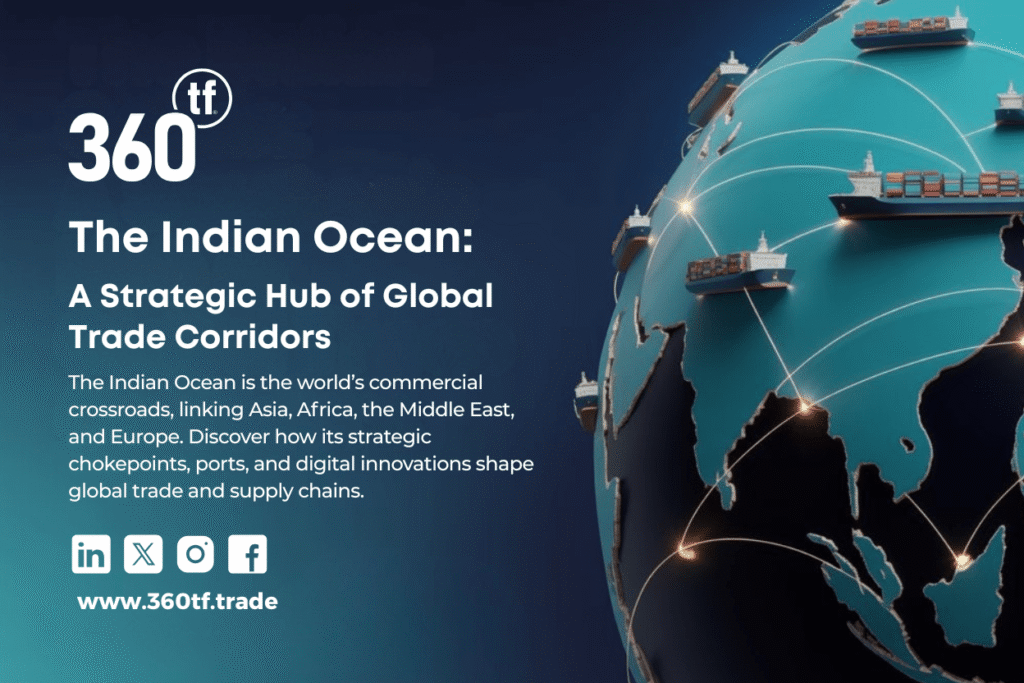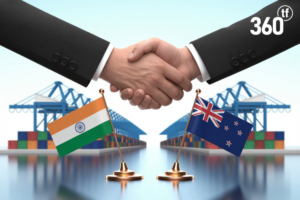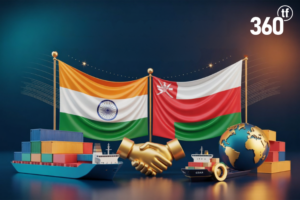The Indian Ocean has always been more than a body of water, it is the world’s commercial crossroads. Today, it carries a significant share of global maritime traffic. By linking Asia, Africa, the Middle East, and Europe, it connects some of the busiest and most strategic trade corridors on the planet. Every year, a large portion of global seaborne goods and energy flows pass through its waters. As a result, the Indian Ocean has become a critical artery for containerised trade, energy shipments, and supply chains that sustain modern economies.
The Ocean’s Global Significance
At the centre of global commerce, the Indian Ocean enables the seamless movement of energy, raw materials, and manufactured goods between fast-growing markets. For example, the Strait of Hormuz carries over a quarter of global seaborne oil flows. Similarly, the Bab el-Mandeb serves as the Red Sea gateway, while the Strait of Malacca links the Indian Ocean to the Pacific. These chokepoints are not only geographic bottlenecks but also financial and strategic flashpoints.
Any disruption, whether due to geopolitical tension, piracy, or port congestion translates into higher freight rates, inflated insurance premiums, and rising working capital costs. Consequently, businesses and financiers face immediate impacts whenever these trade arteries are disturbed.
The region’s ports also highlight its centrality. Singapore, Dubai, Mumbai, and Colombo rank among the most important transhipment and logistics hubs worldwide. Together, they handle tens of millions of containers and serve as gateways for energy and trade flows. For exporters and importers across Asia, Africa, and Europe, the Indian Ocean is not just another option, it is the backbone of their commercial lifelines.
The Strait of Malacca: The Ocean’s Pulse Point
Within this vast ocean, the Strait of Malacca stands out as its most critical artery. Each year, it handles close to 90,000 vessel transits. In addition, it funnels roughly a quarter of all internationally traded goods, valued in the trillions of dollars. The Malacca corridor is therefore unmatched in both scale and importance.
China channels a large share of its oil imports and raw materials through Malacca. Likewise, Japan and South Korea depend on it for their energy security and industrial supply chains. Southeast Asia’s ports, especially Singapore, act as indispensable logistics hubs. For India, too, the strait is crucial. A substantial portion of its seaborne trade, including crude, LNG, pharmaceuticals, textiles, and refined petroleum products, passes through this route.
The diversity of cargo demonstrates its importance. Oil, LNG, electronics, automobiles, palm oil, and grains all move through Malacca. This corridor not only fuels economies but also powers global consumption. However, any congestion in Singapore, piracy threats, or climate-driven disruptions can quickly ripple across supply chains, from Vietnam’s factories to Germany’s car plants.
Challenges and Opportunities for Business and Finance
Growing demand is straining this lifeline. At times, congestion has left vessels waiting days for unloading. Moreover, piracy and geopolitical risks add layers of volatility. For businesses, these issues create immediate costs: delays result in inventory build-up, working capital strain, and rising insurance expenses.
This is where digitalisation and financial innovation become central. For instance, smart port infrastructure, predictive analytics, and real-time cargo monitoring are improving efficiency. At the same time, fintech-driven trade finance solutions, such as blockchain-based documentation, real-time settlement systems, and digital credit lines, are helping companies reduce friction and safeguard liquidity.
Outlook
The Indian Ocean is not merely a trade route, it is a strategic enabler of the world economy. Its critical chokepoints, especially the Strait of Malacca, determine how energy, goods, and capital move across continents.
For businesses, this creates opportunities intertwined with risks. For financiers, it underscores the importance of risk management, liquidity, and digital efficiency. Looking ahead, cooperation, investment in resilient infrastructure, and digital innovation will determine how effectively the Indian Ocean continues to serve as the global artery of trade.
The stakes could not be higher. Every barrel of oil, every container of electronics, and every vessel crossing these waters serves as a reminder: the Indian Ocean remains the true pulse point of global commerce.




